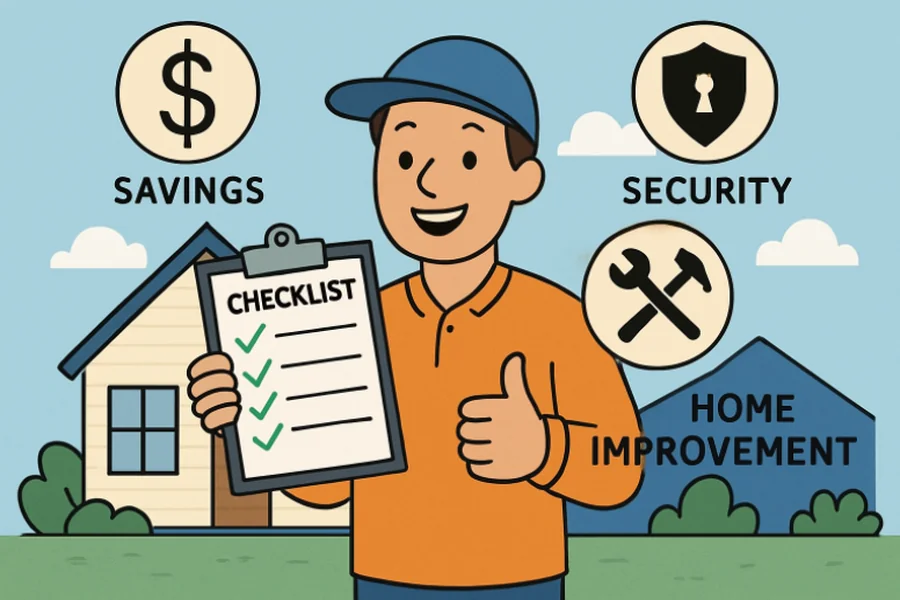Key Takeaways
- Comparing quotes from multiple insurers can uncover significant savings opportunities.
- Raising your deductible is a proven way to lower your monthly payments—just ensure you can afford the extra upfront cost if needed.
- Bundling your homeowners policy with auto or other coverage often leads to generous discounts and simplified management.
- Upgrading security measures or making disaster-resistant home improvements can both enhance safety and cut insurance costs.
- Annual policy reviews ensure your coverage matches your needs so you never pay for unnecessary protection or risk being underinsured.
Home insurance protects you from costly damages and unforeseen events, but rising premiums can take a toll on your household budget. Many homeowners don’t realize that they can take proactive steps to significantly reduce their premiums without compromising their coverage. From shopping around for quotes to making disaster-resistant upgrades, savvy homeowners have a number of ways to save when it comes to insuring their most valuable asset. For those exploring reliable coverage options, you can learn more from experts at https://www.thehartford.com/aarp/homeowners-insurance. It pays to be informed.
By understanding how insurers determine your rates and utilizing strategies to optimize your policy, you can avoid unnecessary costs while ensuring your home stays protected. These methods range from improving your credit score to leveraging discounts through policy bundling. Taking a few simple actions can add up to substantial savings year after year. Insurance experts recommend regularly reviewing your policy, especially if you make home improvements or your family’s needs change. Simple changes, like installing security systems or increasing your deductible, can have a dramatic impact on your premium, leaving more money in your pocket to spend where it matters most.
Maintaining adequate coverage is crucial, but that doesn’t mean you have to accept high premium rates as a given. With market fluctuations and regional risks on the rise, it’s more important than ever to be proactive. Whether you’re a first-time homeowner or have years of insurance experience, these strategies will help you navigate your options and secure the best rates possible.
Shop Around for the Best Rates
Insurance rates can differ by hundreds of dollars depending on the provider, your location, and personal situation. It’s wise to get detailed quotes from at least three different insurers every time your policy is up for renewal. Major comparison sites and independent agents can provide a broad view of your options, helping you identify the best deal available. According to experts at the Insurance Information Institute, shopping around is one of the fastest ways to realize substantial savings.
Increase Your Deductible
Opting for a higher deductible can reduce your premium by up to 25%. A deductible is the amount you pay out of pocket before your insurance policy kicks in. For example, increasing your deductible from $500 to $1,000 may lead to lower monthly payments. However, make sure you have enough set aside to comfortably cover the new deductible if you have to file a claim.
Bundle Your Policies
Insurers typically offer significant discounts when you combine your home and auto insurance, or add umbrella policies and other coverage. Bundling not only saves money—it also means fewer bills and a single point of contact for all your insurance needs. This can cut your overall premiums by as much as 20%.
Enhance Home Security
Adding security features like monitored alarm systems, smoke detectors, deadbolts, and motion-activated lights can provide a double benefit: increased peace of mind and lower insurance costs. Many insurers reward proactive risk reduction with premium discounts for safety improvements. This can be especially advantageous if you live in an area prone to burglary or fire.
Maintain a Good Credit Score
In many states, your credit rating plays a role in determining your insurance score. A higher score signals lower risk to insurers and can lead to more affordable premium costs. By keeping balances low, paying bills on time, and regularly reviewing your credit report, you can help maintain a strong score and reduce expenses. Studies show that homeowners with low credit scores often pay more for home insurance than those with higher scores. For example, in Utah, residents with poor credit may pay nearly $1,500 more per year on average for coverage than individuals with excellent credit.
Update Your Policy Regularly
Did you replace your roof, upgrade your plumbing, or make other significant improvements? Always notify your insurer after any substantial home upgrades, as these can lower risks and sometimes reduce your premiums. At the same time, updating your coverage ensures you’ll be fully protected against new risks and the increased replacement value of your renovated property.
Consider Disaster-Resistant Upgrades
Making your home more resilient to disasters can be a smart investment. Whether you’re adding storm shutters, reinforcing your roof, or installing fire-resistant materials, these upgrades may qualify you for lower insurance rates. Insurers often incentivize homeowners for reducing the overall risk of costly claims in regions susceptible to wildfires, hurricanes, or floods.
Review Your Coverage Annually
Assess your insurance policy at least once a year or after any major life change. Get rid of coverage you no longer need and ensure you’re not under- or over-insured as your circumstances evolve. Regular reviews help you avoid unnecessary expenses and protect yourself against potential gaps in coverage. The Insurance Information Institute offers checklists and resources to simplify this process for homeowners.
Final Thoughts
Managing home insurance costs doesn’t have to mean cutting corners on protection. By comparing quotes, maintaining good credit, bundling policies, and investing in security or disaster-resistant upgrades, you can significantly reduce premiums while safeguarding your home. The key is consistency—review your policy regularly and make adjustments as your needs evolve. Taking these proactive steps not only saves money year after year but also gives you peace of mind that your most valuable asset is protected.

